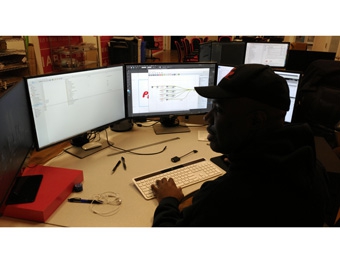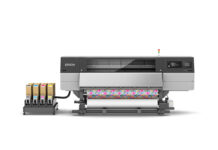By investing in Esko (www.esko.com) Automation Engine, Promotional Screenprint (www.simply-reliable.com) has already helped to automatically send nesting layouts much faster to their Esko Kongsberg finishing tables, and has enhanced the preflight process—and that’s just a start.
Led by president and founder Robbie McDaniel, Decatur, Georgia-based Promotional Screenprint (PSP) is known in the industry for its innovative approach, bringing better solutions to the retail graphics space. Their print production department, including a new HP10000and four HP7600 flatbed printers along with various other small presses, runs 24/6, and is utilized for both decor and promotional print applications—and fast speed to market. PSP Fulfillment handles everything from concept and creation of the storefront site to putting the last box on the truck. PSP has been listed on the Inc. magazine 5000 list—its annual ranking of the fastest-growing private companies in America—four times since 2010.
Until recently, PSP was doing their prepress work manually. “Everything,” recalls Ronald Whitfield, Automated Systems Manager. “We were doing layouts, imposition, and all other tasks manually in Adobe InDesign and Illustrator without any automation. We even converted colors ourselves. We didn’t have an imposition application for nesting. It would take us a good ten to fifteen minutes for a layout, including nesting and shapes.”
The industry is focusing on personalized materials and fast paced jobs, especially in digital. PSP had to keep up with its presses, which meant operating faster than they were manually. “Our manual process went from receiving files and preflighting them, to delivering press-proofs for approvals,” says Whitfield. Because of the variation of content—like pricing—there are so many more files to create, all at the same time. We wanted to automate redundant and time-consuming tasks every day with every file. That would allow us to put more time into the more complex jobs.”
PSP knew of Esko because they were already very happy with their two Esko Kongsberg XP finishing tables, and invested in Esko Automation Engine. It was quickly apparent that Automation Engine would allow PSP to add functionality and the possibility to automate the full department, from design to finishing. That included creating a workflow to prepare a file—with the cut path—to be sent to the Kongsberg finishing table.
PSP has been in production mode for six months. “I was hired eight months ago to help make Automation Engine work in the prepress department. After one-and-a-half months, I visited Esko for Automation Engine training. When I returned to the office, we programmed i-cut Layout first because when the file arrives for nesting, it is complete and has been proofed out—and approved. All the proof, cutting and print files go through the workflow without anything holding it back,” explains Whitfield. “It’s a repetitive process. Now, about 95 percent of the layouts are driven by a customized workflow created for Automation Engine. It has been extremely productive. Before, if we received an order with twenty-five layouts that needed to be done at the end of the day, we would have left for the day and returned to the job in the morning. Now, by morning all layouts are automatically ready for the press.
“We have increased the workflow to the presses just by automating the layouts. Instead of taking fifteen minutes to create a complex layout, it takes only forty-five seconds—and that doesn’t include the time-savings we’ll expect to see with preflights and proofs.”
Before, PSP was not sending preflight reports in a timely manner. “Now we conduct preflights very quickly, up front. The Automation Engine preflight report can tell us if there are errors or unreported sizes. It also allows us to send proofs within twenty-four hours,” adds Whitfield.
PSP customer service project and account managers manually enter job data into PSP’s MIS system, Retail Reliability Suite. “While we are not utilizing web to print at the moment, we are working in that direction,” explains Whitfield. “However, Automation Engine already takes XML data from files to create jobs and their specs in the workflow. They also direct the workflow to do various tasks. It creates a folder hierarchy on the jobs server, which we had always done manually for new orders. Prepress no longer makes an error.”
And while they haven’t done so yet, Promotional Screenprint plans to use Automation Engine Connect to pass job information from their external business systems to further drive automation and reduce human interaction.
“I am excited about the potential to do more,” exclaims Whitfield. “Automation Engine can do so much more than what we are utilizing, at the moment. I would tell anyone who needs a workflow to invest in Automation Engine—and don’t even think of boundaries when you do.”
For more information, visit www.esko.com.











